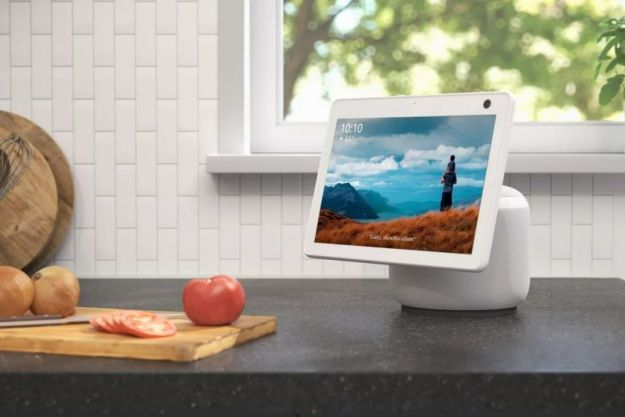As smart home technology has progressed over the last five years, the interconnectedness of devices has been the central draw. The ability to tie your household lights to your front door, or to connect a security system to sirens throughout the home, appeals to people due to the convenience and peace of mind it can provide.
Smart assistants have been the major development, however. The birth and rise of Amazon’s Alexa and Google Assistant has played a critical role in the development of smart technology. Despite the controversy these technologies generated, particularly surrounding privacy implications, more and more devices enter the market with built-in voice assistants.
Voice control removes a usage barrier. While almost all smart devices can be controlled with a smartphone, the seamless nature of asking Alexa or Google to take care of a task often becomes the go-to method of interacting with a device. With that in mind, a case can be made to put smart assistants in everything.
Hands-free control encourages more frequent use
Think about how many instances where your hands are full, but you need to control a device. Perhaps you’re cooking, a call comes in, and you need to lower the volume on the TV. No one wants to touch their phone when their hands are covered in dough. The ability to speak directly to your TV and say, “Hey, Alexa, lower the volume” would be a game-changer.
Even in everyday situations, like when you are going to bed, it’s far easier to say, “Hey, Google, turn off the lights” than it is to pull out your phone, find the app, and manually turn them off.

Now imagine if that level of convenience was available in every device, without the need for a smart assistant nearby. Many companies have already begun to implement this idea.
The recent Ecobee SmartCamera comes with Alexa built-in, for example. Although it isn’t a dedicated smart assistant, you can ask the SmartCamera’s Alexa to perform any task that Alexa can do. If your smart home is primarily controlled through Alexa, the SmartCamera gives you the same level of control that an Echo Dot would.
Some speakers go further than this and provide the user with a choice. The second-generation Sonos One, for example, allows users to choose between either Amazon Alexa or Google Assistant, all while providing tremendous audio quality.
It doesn’t stop there. You’ll find smart assistants integrated in places and gadgets you wouldn’t think of normally. The iDevices Instinct is an Alexa-powered light switch to control lights in a room, making it an ideal device for use in areas that might not normally have a lot of tech; for example, garages or backyard sheds.
Kohler even decided that Alexa had a home in your shower. The Kohler Moxie Showerhead is definitely a luxury item, but it makes sense to use — you can queue up your favorite tunes while you shower, or just listen to the news to prep you for the day.
Alexa has even found a home in other accessories and wearable. The Echo Loop is a smart wearable that gives you access to Alexa on your finger. It’s the perfect way to give yourself a reminder while on the go.
Smart assistants add more value
The inclusion of smart assistants in more devices will increase the value for people. The Amazon Echo Dot retails for around $30, while the Nest Mini goes for around $50. If a product comes with one of these assistants included free of charge, then the overall value of the product increases.
Including smart assistants in a broader range of products benefits the consumer. It also benefits Amazon and Google. If a consumer is on the fence about investing in a smart assistant, but they purchase a device with one built-in and becomes a part of that respective ecosystem as a result, then they will likely purchase more of the same kind of voice assistant — at least one for each room, most likely.
Smart assistants are becoming more secure
The primary argument against smart assistants is privacy concerns. Many people are afraid that their assistants will eavesdrop on them and record sensitive information. These fears are not unfounded, either; in the last several years, there have been many confirmed instances of smart assistants listening due to false activations. In a few cases, both Amazon and Google sent recordings to third-party companies for transcription purposes.
However, Amazon and Google have both taken stronger stances on consumer data privacy. Users now have the option to use two-factor authentication, as well as to delete recordings from the device. Google has made it possible to clear the data it collects on you, including your Google Assistant requests and location data.
While privacy is still an area of concern for many users, these strides forward point to a future in which users do not have to worry about smart speakers listening in unless they are invited to do so.
If you are worried about privacy, you do have the option to disable smart assistants. There are often digital or physical switches that can be flipped to turn off the microphone, and some smart displays even have a built-in camera shield. If that doesn’t feel like enough, some companies have developed devices that fit over the top of a smart assistant and garble any incoming sound.
Should you have a voice assistant in every device?
While an argument can be made that all devices do not need smart speakers, there is another angle to consider. If you would place an Amazon Alexa or Google Home device in a room, there is no reason why it cannot be implemented into another device.
Including voice assistants in all smart home products would double the functionality of a product and reduce the number of devices you need to power, set up, and keep track of. As long as the voice assistants were able to sync up and recognize the proximity of your voice (to avoid triggering multiple assistants at once), then including more assistants throughout the home is a win-win.
As voice assistants grow more intelligent with time, their utility will also grow. Now is the time to begin implementing smart assistants throughout the home in the form of other devices.
Editors' Recommendations
- Home Depot’s Hubspace is a great way to start building your smart home
- The Blink Mini 2 features an updated design, support for outdoor use
- Google Assistant loses 17 features as the company lays off employees
- Google Home adds new camera features and support for Nest Cam Outdoor
- Top ways smart tech can save Thanksgiving dinner




